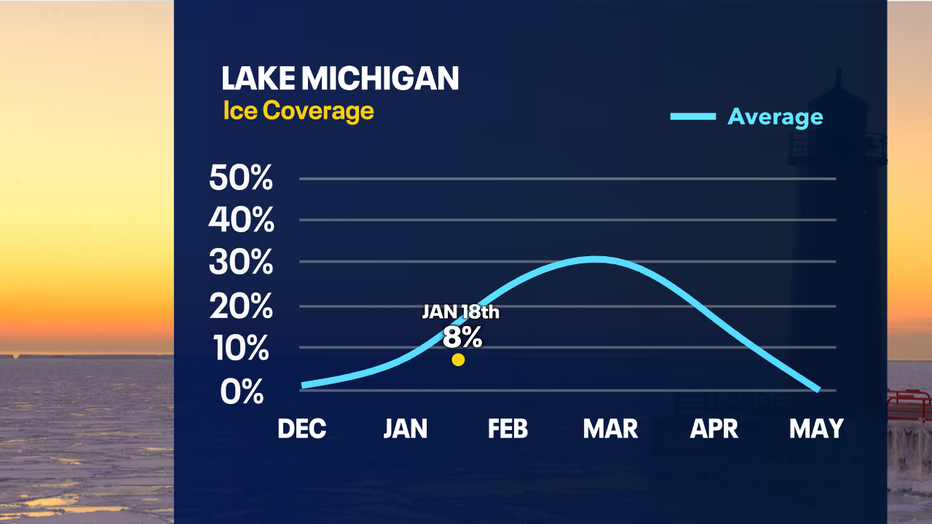Lake Michigan ice coverage, January cold snap means rapid formation

Lake Michigan Ice Coverage as of Thursday, Jan. 18
MILWAUKEE - December 2023 was the warmest December on record for Milwaukee.
Much of the Great Lakes region shared abnormally warm temperatures. As a result, according to climate.gov, the Great Lakes had record low ice coverage to begin 2024.
The recent cold snap has caused rapid ice formation in shallower waters. From Chicago up to Manitowoc, ice concentrations of 90-100% are quite common in harbor areas.
SIGN UP TODAY: Get daily headlines, breaking news emails from FOX6 News
Just because we had a stretch of colder-than-average weather doesn't mean we're back to normal. With an average ice coverage in Lake Michigan of around 8%, according to the Great Lakes Environmental Research Laboratory, we're still a long way away from historical norms.
Usually, as we enter the end of January, we're ending ice rapidly across the Great Lakes. This is on average our coldest of the year, and we typically add ice until the beginning of March; 15-20% of Lake Michigan ice coverage is a typical range.

Current ice coverage compared to average
With warmer-than-average temperatures favored for the end of January, don't be shocked if we see ice formation slow rapidly.

